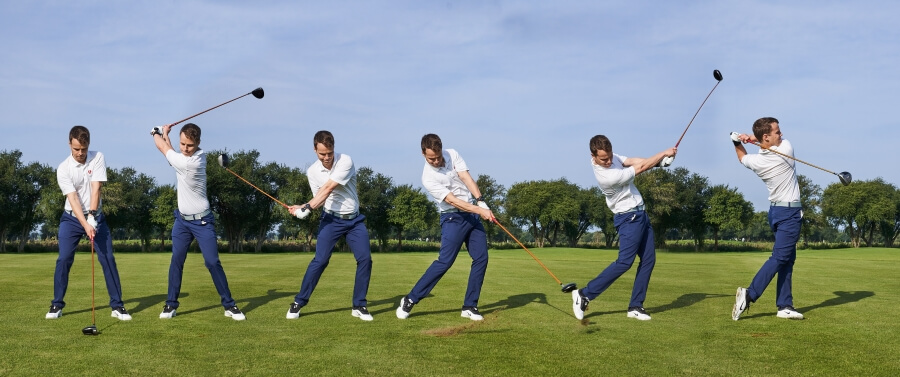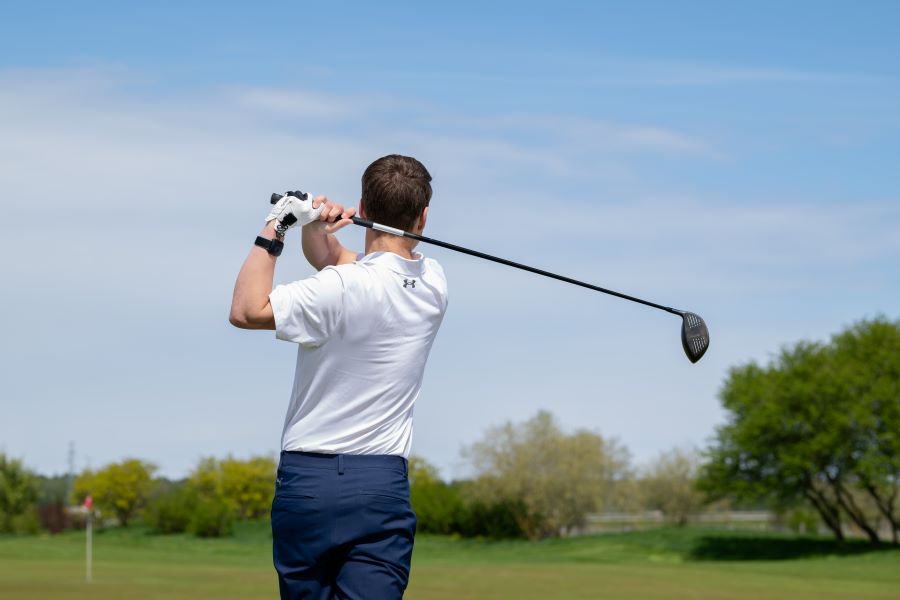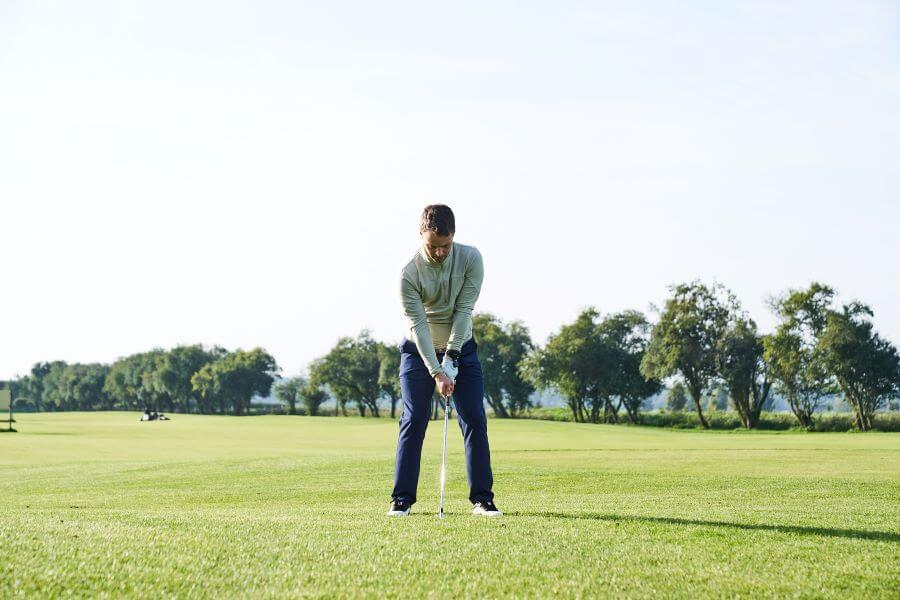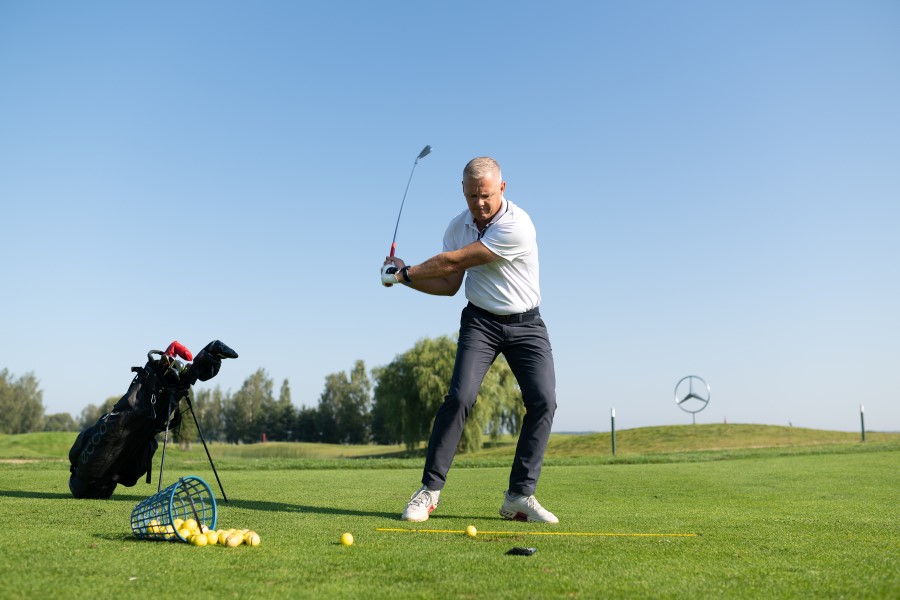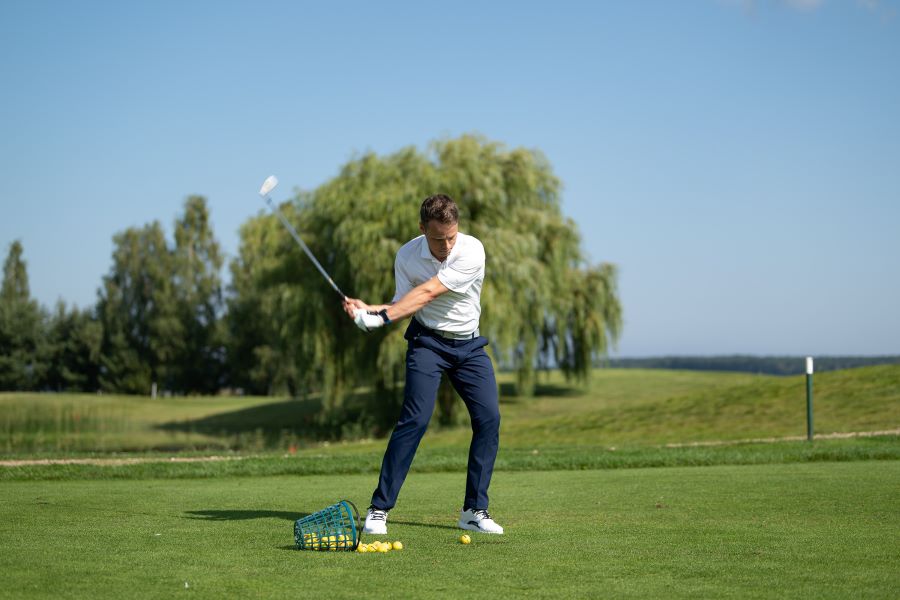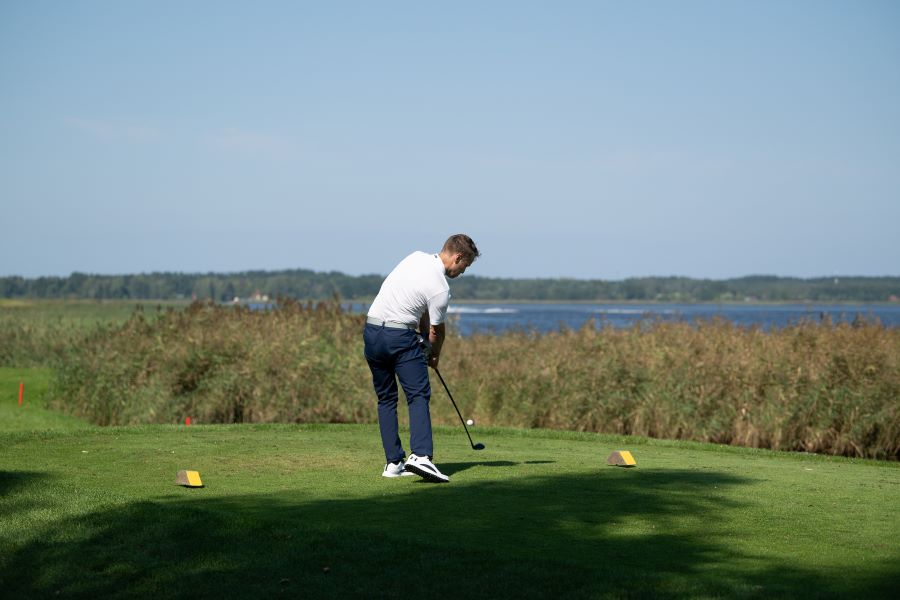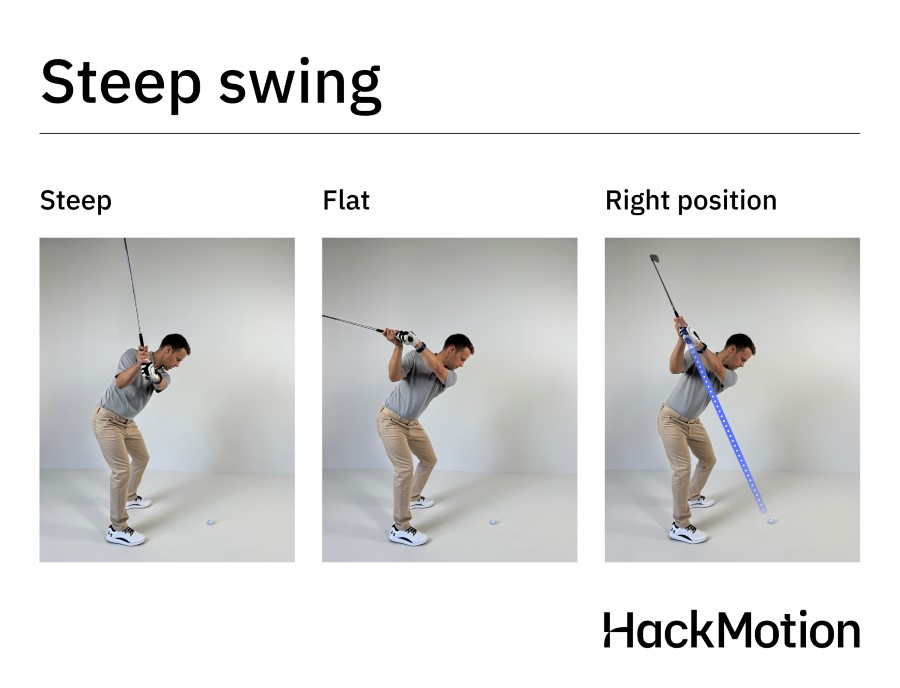Hooking Driver But Not Irons? Here’s Why and How to Fix It
Have you ever felt like your irons were dialed in, but your driver was a loose cannon?
You’re not alone.
Most golfers notice their irons are relatively straight—maybe a little thin or fat, but generally close to the line.
So why is this?
The answer typically has to do with the wrists in the driver swing. Once you unlock this secret, you’ll be well on your way to hitting straighter drives.
Why Do I Hook Driver But Not Irons? – Key Takeaways
Hooking the driver is more common than hooking irons due to the driver’s length and the challenge of squaring the clubface.
- A closed driver clubface can cause a hook, so it’s essential to get the correct wrist angles and square up the face.
- The stance with a driver may be wider, and you’re further from the ball, but you still need to transfer your weight during the swing.
- Releasing the club through impact is good, but golfers who hook tend to overdo it, releasing the club too hard or too soon.
- Work on drills to check both your clubface angle and your swing path.
- Take videos of your swing with a 7-iron and again with the driver to identify any differences.
If you prefer to watch a video about why you are hooking your driver but not the irons, here is a complete guide from Rob Cheney about why this could happen in your game.
Contents
What Causes the Driver to Hook?
A few of the causes that can lead to the hooking of a driver but not the irons include:
- Improper setup and stance.
- Poor weight transfer.
- Trouble setting the correct wrist position.
- Swing path and plane problems.
- Equipment and skill mismatches.
- Incorrect tempo and timing
- Early release of the club head.
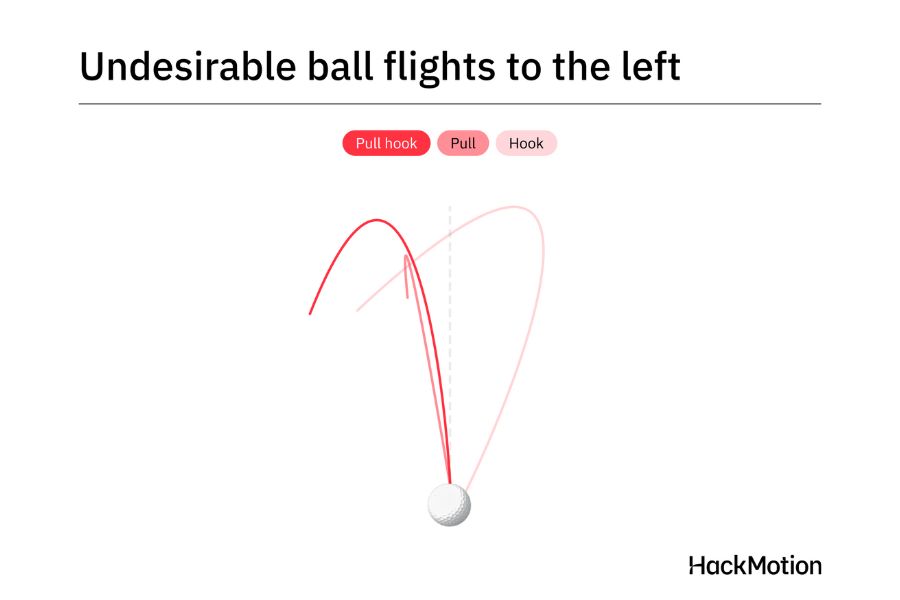
Short on time? Here are 3 simple drills to improve driver distance and consistency that you can take to the driving range today. Check out the drills here!
6 Simple Fixes for Hooking Your Driver But Not Irons
Many golfers will hook every club in their bag, showing a lack of technique and understanding that still needs to be learned.
If you hit your irons dead straight but struggle to keep the driver in the fairway, you aren’t too far from finding the solution. Here are six effective fixes for hooking the driver but not the irons.
1. Aiming Right is Not Your Solution – Aim at Your Target
When setting up to hit an iron, it’s just easier to see where you are aimed and whether or not the club is on the proper line.
A lot of this has to do with how much closer to the ball you are standing when you hit the iron.
As you struggle with the hook, you may start aiming down the right side to accommodate it. The problem with this is that it can cause your path to be even more hook biased.
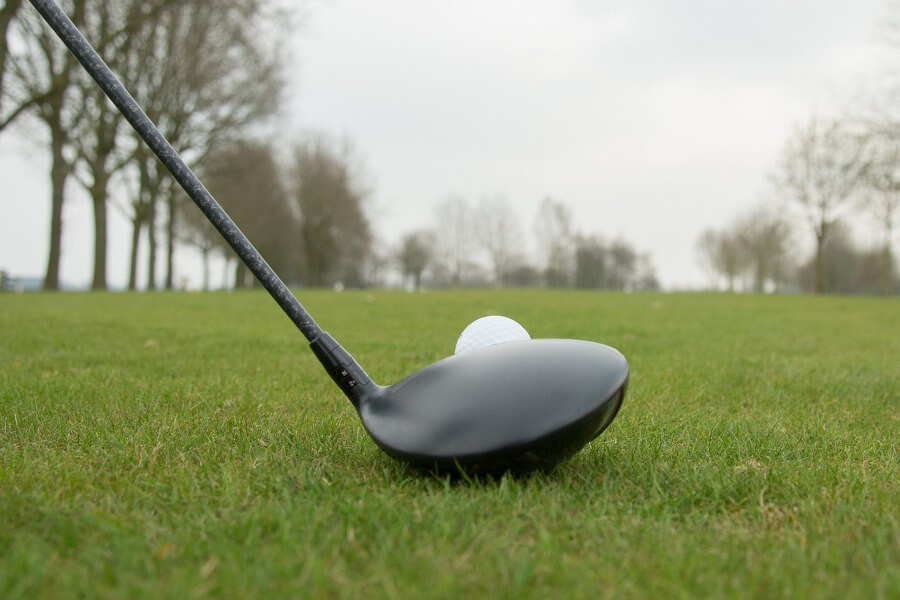
The good news?
Your iron aiming technique and strategy must be pretty good.
Take a 7 iron and pay attention to your routine and how you aim your shots. Use this to aim the driver. It should be the same!
2. Get the Ball Position Correct
Your iron shots likely involve placing the ball right in the middle of your stance, which is a pretty easy position to find.
With the driver, the ideal spot is the inside of the left heel. Most amateur golfers exaggerate this position and play the ball too far forward.
When the clubface makes contact with a ball placed too far forward in the stance, it is often closed.
Some golfers hook the ball with their driver simply because the ball position is just a little too far forward.
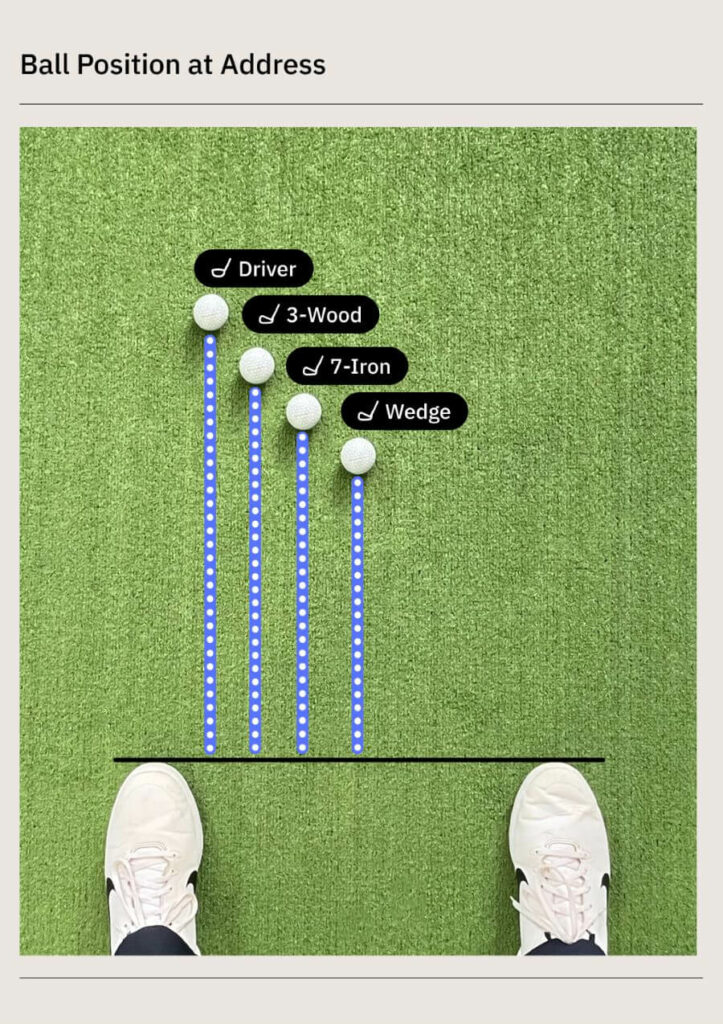
3. Strong Grips Can Cause Problems
Is your grip for your driver the same as it is for your irons? One of the biggest culprits here is inconsistency in grip size or style from one club to the next.
Does your driver have a midsize grip, and do your irons have a standard? Many players change or upgrade golf grips and are unaware of their impact on the position of the hands.
A stronger grip means that your left hand is turned slightly more to the right (for a right-handed player). It also means that the right-hand ends up more on the bottom side of the grip.
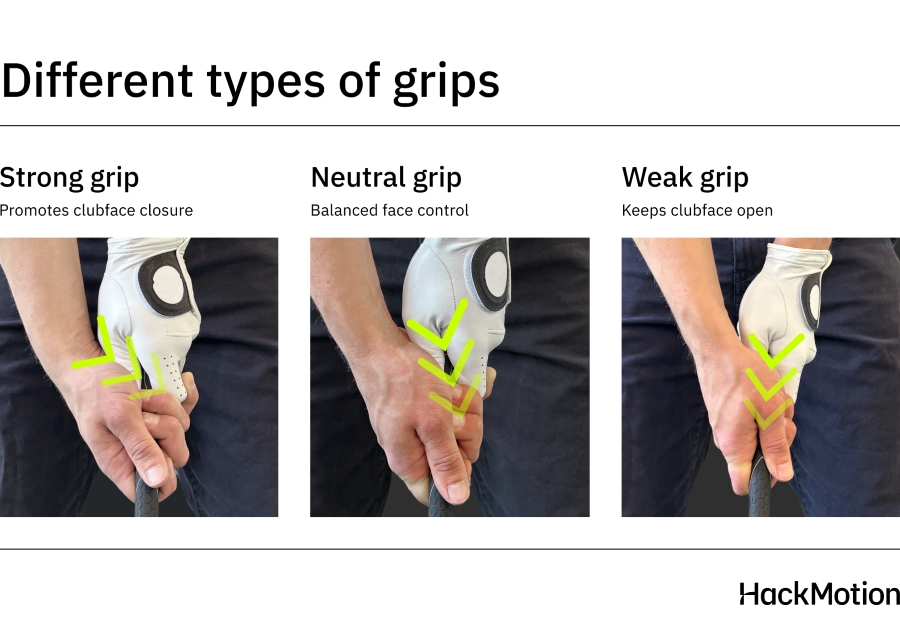
The right hand becomes more active in the golf swing from this position.
If you think your grip is the problem, closely examine how your hands are on the club with your iron shots, and then see what changes when you move to the driver.
Wearing HackMotion can help you develop consistency in your wrist position.
4. Controlling the Clubface at Impact
Hitting straight shots requires control of the clubface at impact.
The further away from the golf ball you move, the harder it is to control the clubface angle at impact.
One of the best ways to do this is to ensure your wrist position at address and at the top of your swing is correct.
After analyzing more than 1,000,000 golf swings we have found that golfers with a flat lead wrist at the top of the swing have the most chance of a flat lead wrist at impact.
5. Weight Transfer Lagging Behind
With the wider stance, many golfers have a hard time getting their weight to transfer to the lead side.
It’s great to feel your weight load up on your right side as you swing back.
However, for those who hook the ball, sometimes the weight hangs back, and the club is almost wrapped around the body on the follow-through.
This motion ends up causing the clubface to be closed when it makes contact with the ball.
Feel free to pause the video below at any point to get a better look at each part of the sequence and see how your swing compares.
Try hitting a few drivers with a slightly narrow stance. You will find that it is easier to transfer weight to the lead side.
Gradually increase the width of youance and see if you can now transfer the weight without issue.
6. Release is Good, Don’t Overdo it
Releasing a golf club is essential to be able to hit it straight.
Essentially as your golf club swings back, the face opens up, and on the way down, you will have to work to square it so that you can hit a straight shot.
Give yourself just a second at the top of your backswing on the driver to help to ensure you are not starting the release process too soon and that your hands are not getting overly involved in the process.
Drills to Fix Your Golf Hook with a Driver
Now that you have all the reasons and fixes, it’s time to head to the driving range.
I’ll share with you some of my favorite resources for practicing to fix your hook with your driver.
Swing Path Drill
The swing path drill featured in this video teaches you where the club should be traveling when you want to eliminate the hook.
The drill is done with irons, but it also applies to a driver.
With the swing path drill, you will learn that your hook is not necessarily caused by swinging to the left; in fact, it’s probably caused by swinging out too far to the right!
Incorporate HackMotion into Your Practice Session
HackMotion is one of the best ways to make sure you are practicing fixing your hook effectively.
Having the HackMotion on your wrist is a bit like having a teaching professional helping you at the range.
One of the best things about the HackMotion sensor is that you can adjust it to work specifically for your needs.
In other words, if your hook is severe and the wrist angles need to be corrected significantly,
HackMotion can be calibrated to do it a little at a time, helping you feel you are making progress day by day.
Switch Between the Irons and the Driver
This is one of the simplest (but sometimes most effective) ways to help fix the issue of hooking the driver but not the irons.
Hit five shots with your irons, adjust your setup, and then hit a shot with the driver.
Most of the time, there is something you are doing correctly in your iron shots that you are not doing with the driver. You may feel it by practicing in this way.
Final Thoughts
Hooking a driver with your driver but not your irons is common.
When you can get the proper wrist angles in place and understand how the swing plane and setup impact your ball flight, it becomes much easier to straighten it all out.
Stay motivated; if you can hit your irons straight, the driver fix won’t be difficult.





